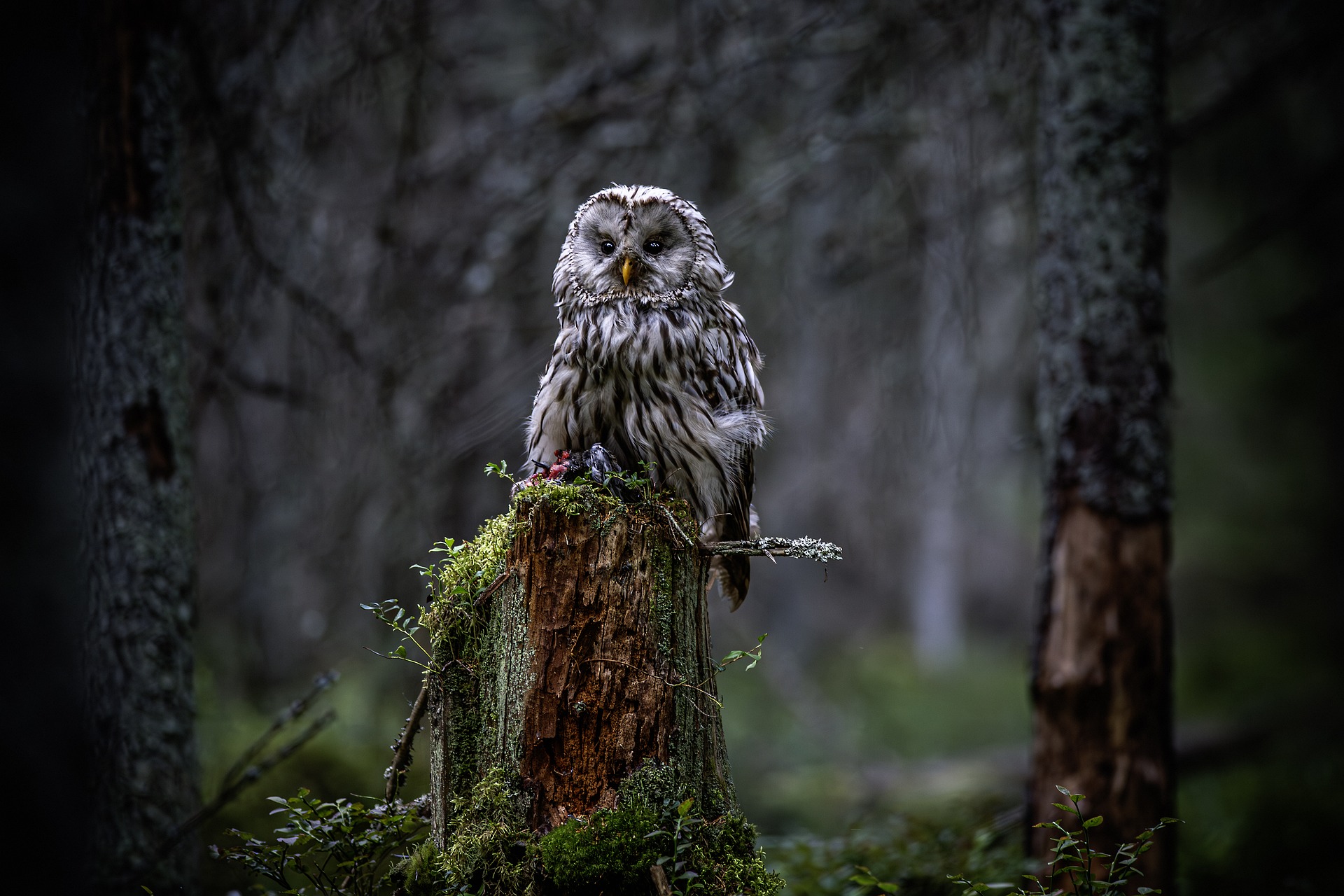The Ural owl (Strix uralensis) is a large nocturnal owl species native to Europe and northern Asia, including parts of Scandinavia, Russia, and the Baltics. It is named after the Ural Mountains, which form a natural boundary between Europe and Asia and where it is commonly found.
Here are some key features and characteristics of the Ural owl:
- Appearance: Ural owls have a distinctive appearance with a rounded head, large black eyes, and no ear tufts. They have a wingspan of around 110-134 cm (43-53 inches) and can weigh anywhere from 500 to 1,000 grams (1.1 to 2.2 pounds). Their plumage is typically mottled brown with lighter streaks and spots, providing excellent camouflage against tree bark.
- Habitat: Ural owls inhabit various forested habitats, including coniferous and mixed forests, particularly those with ample old-growth trees for nesting and roosting. They are also found in mountainous regions and sometimes in wooded urban areas.
- Behavior: As nocturnal birds, Ural owls are primarily active during the night, hunting for small mammals such as voles, mice, shrews, and occasionally small birds. They are skilled hunters, using their keen sense of hearing and silent flight to locate and capture prey. During the day, they typically roost in dense foliage or tree cavities, often remaining well-camouflaged.
- Breeding: Ural owls typically breed once a year, usually in late winter or early spring. They are monogamous and territorial during the breeding season. The female lays a clutch of 2 to 5 eggs in a tree cavity or old nest, and both parents participate in incubating the eggs and raising the young.
- Conservation: While not considered globally threatened, Ural owls face various challenges, including habitat loss and fragmentation due to forestry practices and urbanization. Conservation efforts focus on habitat protection and management, as well as monitoring populations to ensure their long-term viability.
Overall, the Ural owl is an intriguing species well-adapted to its forested habitats, playing a vital role in controlling rodent populations and maintaining ecosystem balance.
Views: 21
Subscribe to the newsletter:
